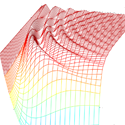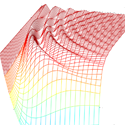A way to distinguish quantum noise
Although experiments are carefully designed to explore an ideal quantum state, in reality, they measure open quantum systems, meaning those that are exposed to an external environment. Understanding how coupling to the environment leads to noise is important in order to control and optimize features, such as coherence and entanglement, in a quantum system.
A standard approach to determining the dynamics of a quantum system is to solve a joint system-environment equation and then eliminate the degrees of freedom associated with the environment. With Markovian, or memoryless dynamics, noise will cause the coherence to decay exponentially. In contrast, non-Markovian dynamics exhibits more complex behavior, which can enhance or degrade system features. In Physical Review Letters, Heinz-Peter Breuer of the Universität Freiburg in Germany and Elsi-Mari Laine and Jyrki Piilo at the University of Turku in Finland present a new way to determine if an open quantum system follows non-Markovian dynamics. Their method is based on calculating how the distinguishability of two initial quantum states changes over time due to the environment. If the distinguishability increases at certain times, then information flow is exchanged between the system and the environment, indicating that the system is non-Markovian. If the distinguishability is always decreasing, then the system is Markovian.
This simple criterion does not require knowledge about the details of the environment. Instead, tomographic measurements of a system can quantify the extent to which a system exhibits non-Markovian behavior. – Sonja Grondalski





